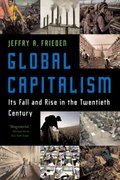Question
According to Statistics Canada, 522 140 units were rented in the agglomeration of Montreal in 2016. In the same year, 4% of units were unoccupied.
According to Statistics Canada, 522 140 units were rented in the agglomeration of Montreal in 2016. In the same year, 4% of units were unoccupied. According to the Union des Banques Suisses, the average rent price for a 3 1/2 in Montreal in 2015 was CAD 879. We will assume that between 2015 and 2016, this price increases by 2%, therefore increases to approximately CAD 900.
To facilitate access to housing, Ms. Gagnon, economist for services of the City of Montreal, proposed to cap the price of rents at CAD 850 (ceiling price) as of January 1, 2017.
1. Represent consumer surpluses and producers for 2016
(How do we find the number of units needed? Do we need to do 0.04*522140?)
2. On the same graph, represent the equilibrium of the housing market
rentals in Montreal in 2017, after the cap policy proposed by Madame Gagnon.
(How do we know how many units are rented in 2017 and what's the price for 2017?)
In the context, there is only 2015-2016, it doesn't say anything about 2017 except that the ceiling price is at 850$)
3. Represent consumer and producer surpluses for
2017.
4. How does the quantity of rented dwellings at equilibrium change?
Why ?
Step by Step Solution
There are 3 Steps involved in it
Step: 1

Get Instant Access to Expert-Tailored Solutions
See step-by-step solutions with expert insights and AI powered tools for academic success
Step: 2

Step: 3

Ace Your Homework with AI
Get the answers you need in no time with our AI-driven, step-by-step assistance
Get Started


